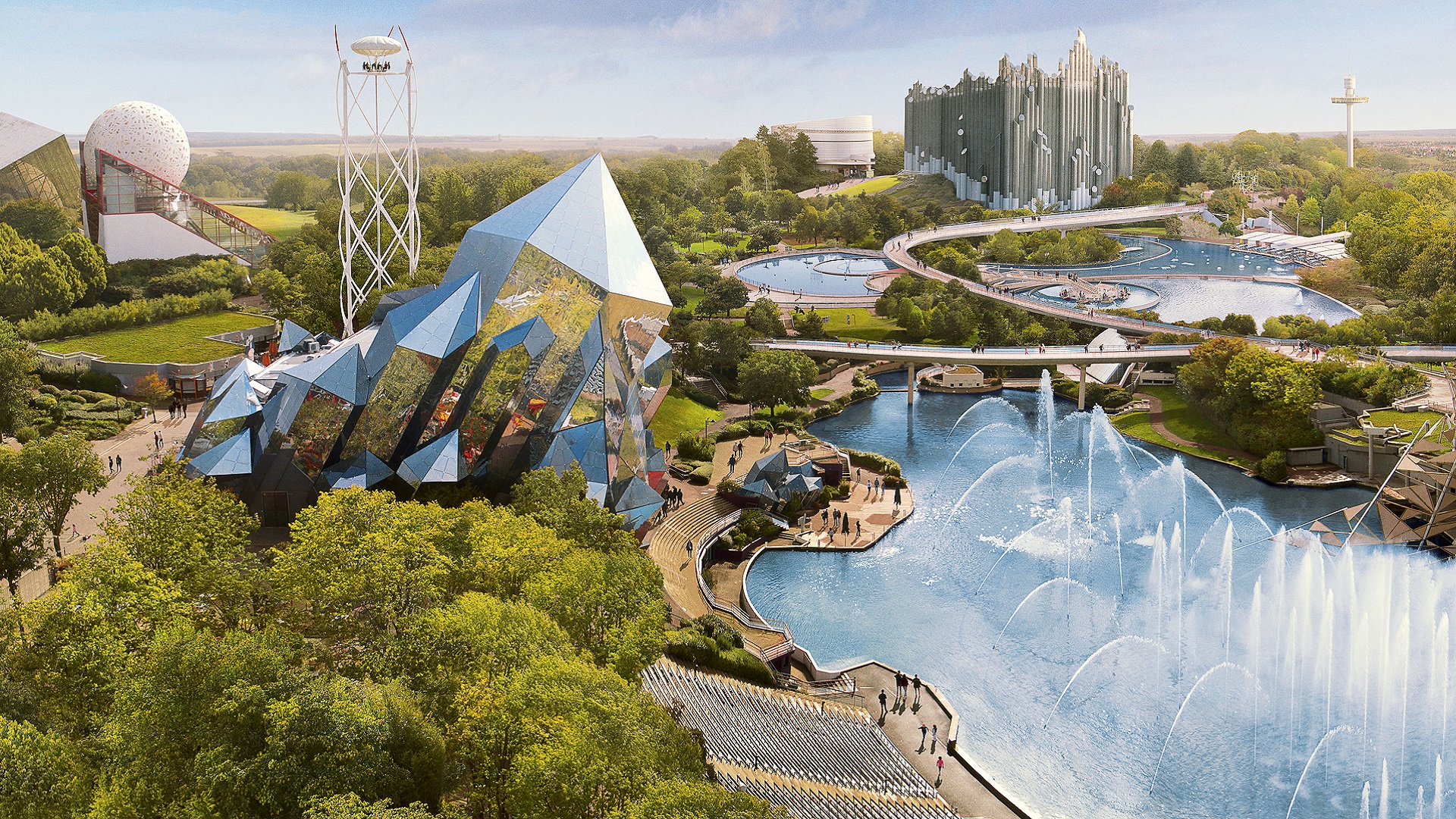From her office in Barcelona, the professional we spoke to markets two of France’s best theme parks. Here she tells us the ins and outs of her work and the parks to which she devotes all her efforts.
Amusement Logic: You graduated as a technician in tourist activities and tourism at the University Centre of Tourism, Hotel and Catering, attached to the University of Barcelona: what made you choose these studies and this sector?
Montse Balaguer: At the time when I studied, tourism was not as well-known as it is today. At that time I was doing my COU (University Orientation Course) and I was hesitating about whether to study teaching. In the school library I found information about tourism studies. It really caught my attention and this, together with my passion for travelling, made me decide to dedicate myself to the sector.
A.L.: Your career started at Interface International, what was your work there?
M.B.: Interface was a company that represented foreign tourism products in Spain. It represented French ski resorts, hotels, airlines… Marketing was done exclusively in the B2B (business-to-business) market. At the beginning, I started working in the sales department and then I became the sales manager.
A.L.: After that, you joined Futuroscope as head of marketing in Spain and Portugal. How did this change in your career take place and what would you highlight from this stage?
M.B.: Futuroscope was one of the products that Interface marketed, so the park management already knew me. At the beginning, I joined as a delegate for Catalonia and Valencia. There was another office in Madrid with a director for Spain and Portugal to whom I reported. In 2003, after some changes, I became the director for Spain and Portugal for Futuroscope, a job I do from the Barcelona office.
A.L.: What makes Futuroscope special and what is the reason for its success?
M.B.: Futuroscope is a theme park unlike any other on the market and that makes it special and unique. It uses technology to offer visitors experiences. It opened in 1987 and at that time it was a park to spend 2 or 3 hours. However, nowadays it takes two days to complete the visit. It always wants to offer visitors the best and takes great care in visitor care. Its success lies in its constant renovation and its search for maximum visitor satisfaction.
A.L.: In 2014, you added to your responsibilities the marketing of the Asterix Park for Spain and Portugal. How did this development in your career come about?
M.B.: Compagnie des Alpes, a very well-known company in the French leisure sector, bought part of Futuroscope’s shares. They have several products, ski resorts, theme parks, including the Asterix Park. As there is an office for the Iberian market, they wanted to take advantage of the synergies and proposed that I develop the Asterix Park product, although only in the B2B market.
A.L.: What are the defining characteristics of Parc Asterix and what is more important, the attractions or the theming? What are the differences between it and Futuroscope?
M.B.: Asterix Park has one of the best theming that we can currently see in the world of leisure. It is related to the famous Asterix and Obelix comics and the truth is that the characterisation is very good. It takes visitors to the fantastic world of Asterix and Obelix. But we cannot forget the attractions, which are a fundamental part of the park; in total, 47 attractions and shows that are constantly being renewed. This year, for example, there is a new attraction, Tonnerre 2 Zeus, and a new parade. There are also three themed hotels outside the park which allow you to live the experience from the moment you enter them.
Futuroscope and Parc Asterix are two totally different and complementary parks. Asterix, located next to the French capital, Paris, is a park with roller coasters and experiences based on the famous comics. Futuroscope, in Poitiers in the west of France, has technology-based attractions to keep visitors entertained.
A.L.: Regarding the public of both parks: do you receive many visitors from the Iberian Peninsula? What differentiates the Spanish and Portuguese public from the French?
M.B.: For Futuroscope, the Iberian market is the first international market, while for Parc Asterix, the Spanish market is among the top 5 international markets. In a way this is normal, as Parc Asterix’s marketing is done only through B2B. Futuroscope, on the other hand, invests in both B2B and B2C (business to consumer) markets. The French public knows the product better and visits the parks more frequently; on the other hand, the Spanish public often does not know very well what they are going to find and tends to be more demanding.
A.L.: What role do you see for intellectual property in the parks, such as in this case the Asterix and Obelix comics in relation to Parc Asterix?
M.B.: Some of the attractions are based on the comics, for example the OzIris attraction, which is based on the Asterix and Cleopatra comic strip. Also, the Village d’Asterix area is based on the life of Asterix and Obelix, along with other characters, in very characteristic places that appear in the comics.
A.L.: We are struck by the fact that you remain faithful to the professional positions you hold. What is the secret to keeping a job like yours?
M.B.: Believing in the product you are promoting is fundamental and, in this case, I really think that the two parks are an extraordinary product for customers to live unique experiences. Without forgetting that the product you are selling must be constantly being renewed, a requirement that the two parks also meet.
On a more practical level, my work has evolved over the years. There have been different directions and therefore different ways of approaching the product. When I started at Futuroscope, for example, it was sold almost exclusively through travel agencies. Nowadays, however, our main market is the B2C. Therefore, the actions to be developed are different.
A.L.: Finally, how do you see the future of the theme park sector?
M.B.: The future is promising. Theme park culture is increasingly becoming part of people’s daily lives. The fact that more parks are appearing should not be seen as a rise in competition, but rather as a sign that Spaniards like them and therefore feel the need to visit them. Finally, Spaniards love travelling, spending time with family and friends, and in a theme park, the experience to be shared and lived is unique.






